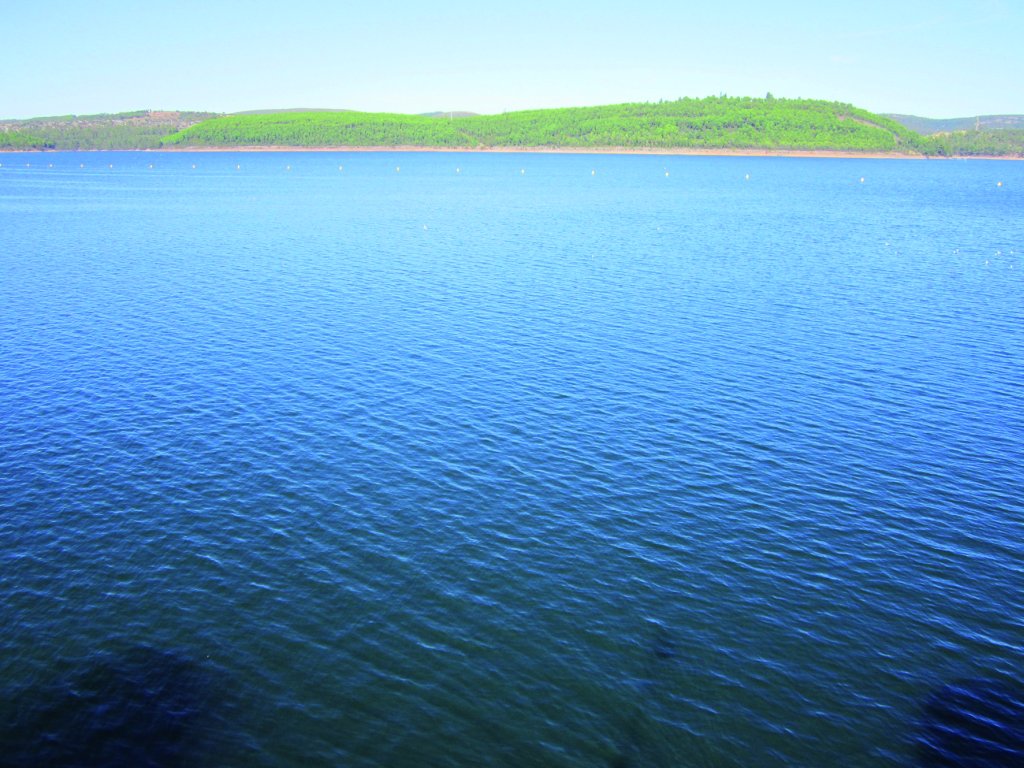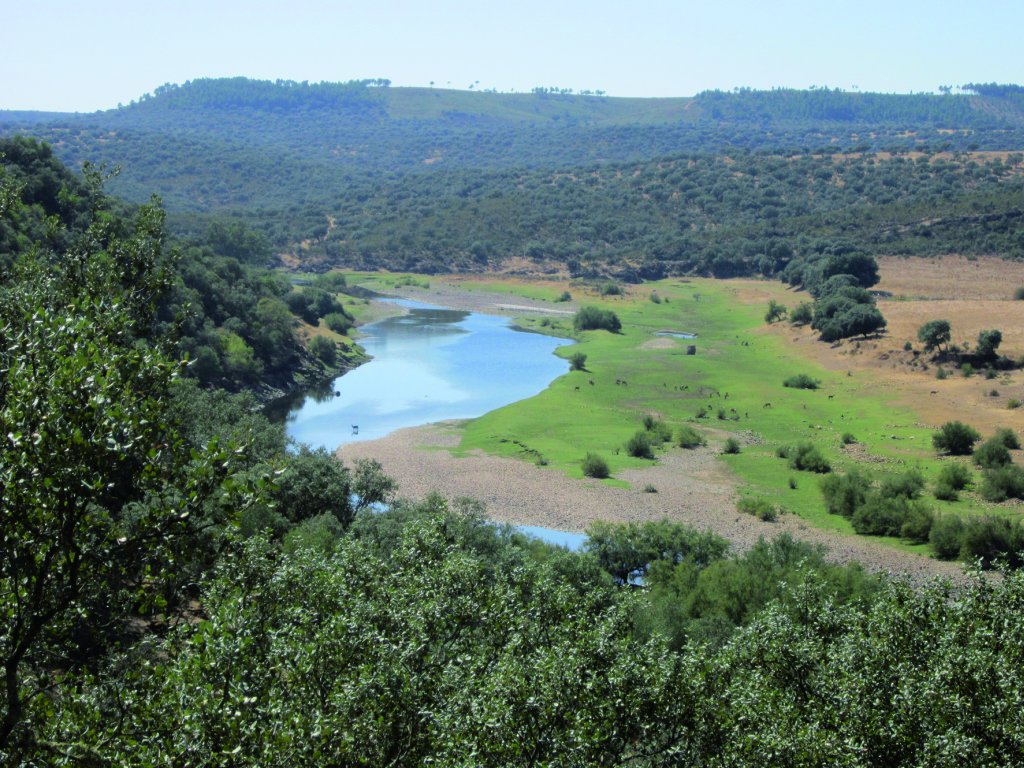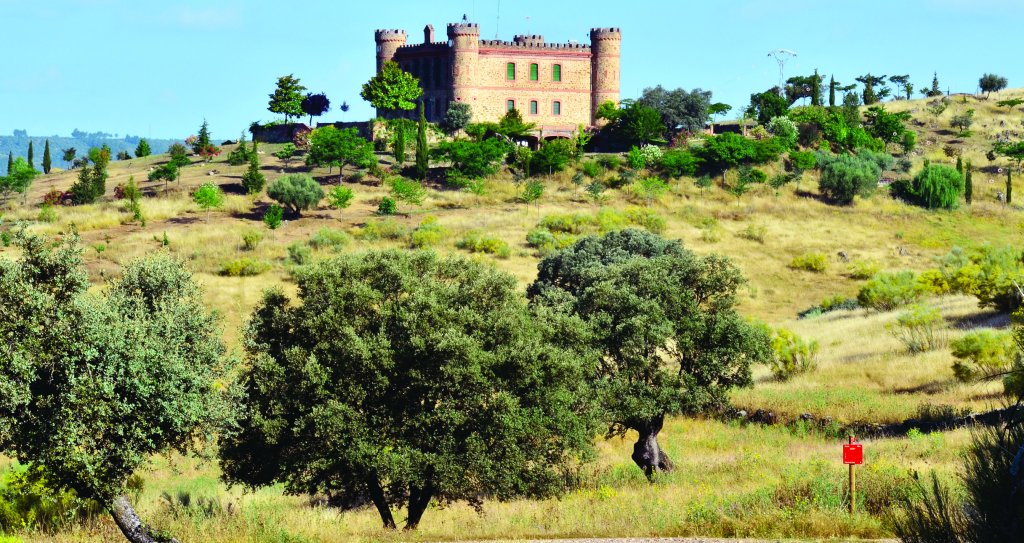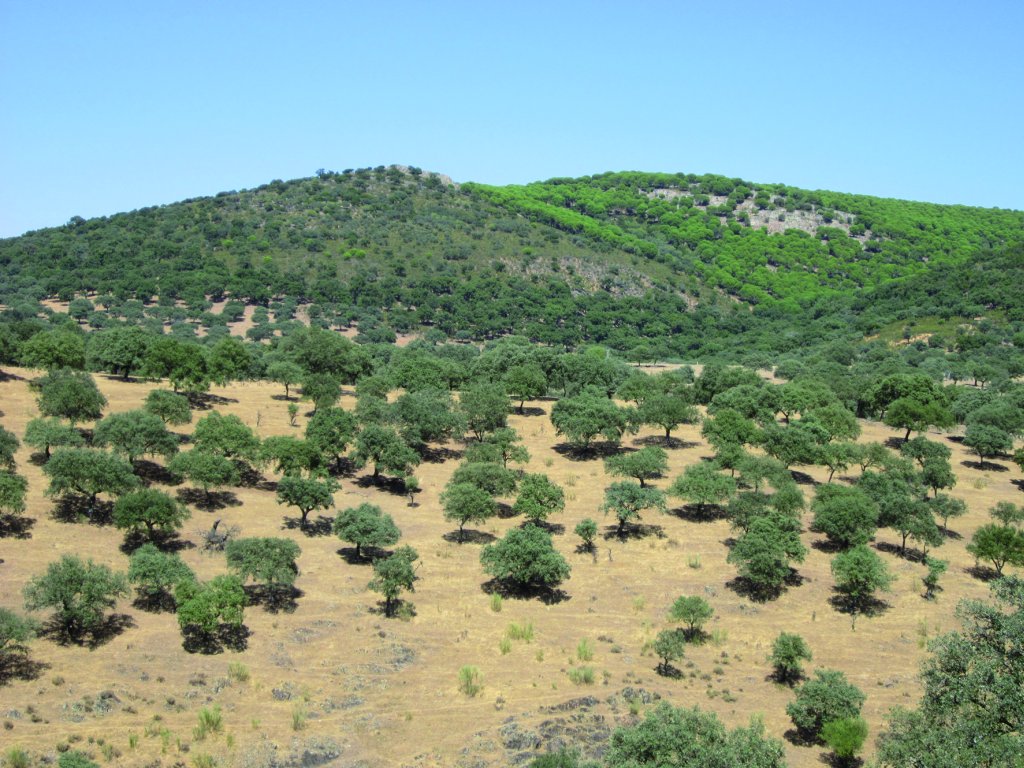Stage 19: Poblado de Guadisa - Castilblanco
Description

Through Cíjara Regional Game Reserve
This Stage links Poblado de Guadisa with the town of Castilblanco. After crossing the crest road of Cíjara Reservoir, the route traverses first through pinewoods, and then through oak forests until the endpoint. It leaves behind the reservoir, gradually moving downstream towards García de Sola Reservoir. Once there, it runs along its shore until the road to Castilblanco, which it follows, amidst holm oak dehesas and pastures, until it reaches the town and endpoint of this Stage.
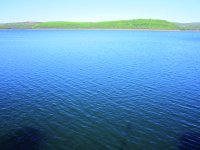
The Stage begins at Poblado de Guadisa, a hamlet built to house the workers at Cíjara Dam, whose diversion dam can be seen from the town. The Stage takes the paved road flanked by holm oaks (Quercus ilex) leading to the intersection with the N-502. At this point, the Trail is interrupted for just over one-kilometre, as it runs along the N-502 until it reaches the dam. It then turns onto the crest road, with stunning views of the River Guadiana as it flows downstream between holm oak forests, somewhat slowed by the reservoir.
On the opposite side of the crest road, the Trail continues along the southbound paved road to the right, ignoring the road to Helechosa de los Montes. The path never loses sight of the dam, which dominates the landscape, until it disappears during the climb down along a rocky, dirt track. The left slope is populated with stone pines (Pinus pinea), and rock rose (Cistus sp.). thickets. As the route continues its descent, the pinewood gives way to holm oaks mixed with an occasional stand or isolated cork oak(Quercus suber) easily identified by the light green leaves and, in particular, the reddish de-corked bark.
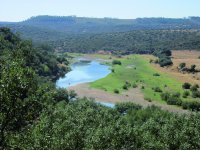
From here, the Trail traverses always through holm oak forests, sometimes as dehesas on grass, and at other times as a more or less pure, dense wood. The dehesas have large deer (Cervus elaphus) and fallow deer (Dama dama), populations; however, they try to avoid contact with humans. They clearly prefer oak forests to pinewoods. In spring and autumn, the green forested meadows are a feast for the eye. In the late summer, the grunt of deer and fallow deer during the rut dominates all other sounds in the forest, offering a spectacular collection of sounds. The antlers of the bucks are biggest before the rut, and can be easily seen in the distance.
In the stretches where the Trail climbs up close to the River Guadiana, one may enjoy beautiful, sweeping views of the river through clearings in the scrub, and maybe, even catch a glimpse of deer or fallow deer drinking water.
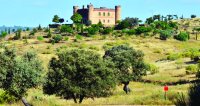
Aside from the deer population, the different varieties of oak are the other main attraction of this Stage until the Cíjara palatial house. Worthy of note is the short stretch through the flood plains, between Mesa de los Toros and La Mata, where the slopes are covered with creeping oaks mixed with many other species, including wild olive (Olea europaea var. sylvestris), yellow broom (Retama sphaerocarpa), lentisc(Pistacia lentiscus) or kermes oak (Quercus coccifera).
The road reaches Cíjara Palace, where one can see for the first time the namesake reservoir. The palace is a unique building located atop a hill near the reservoir. A short path leads to the surrounding area. Not only is the building at this site worth a visit, but also the landscape from the viewpoint near the Guadiana. Past the palace, the Trail continues along the reservoir, moving to and from it as the route winds in and out of the branches and ravines on the southern side. There are countless streams along the route, with many small bridges.
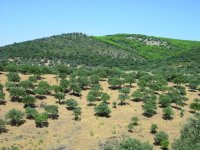
Near the end of this stretch, along the reservoir's service road, one can see holm oak formations on superficial slate soil. In the final stretch, before the Trail converges with Stage 20 on the N-502, is a beautiful view of the bridge over the reservoir.
The route turns 90º and continues north along the N-502. From here, it traverses through holm oak dehesas on pastures until Castilblanco, where the Stage ends at the town centre. For safety reasons, and until alternative routes are available, it is advisable to avoid walking the stretch of the Trail that runs along the N-502. It is worth reading the first paragraphs on the next Stage for a more detailed description of this common stretch.
Sites of interest
Profile
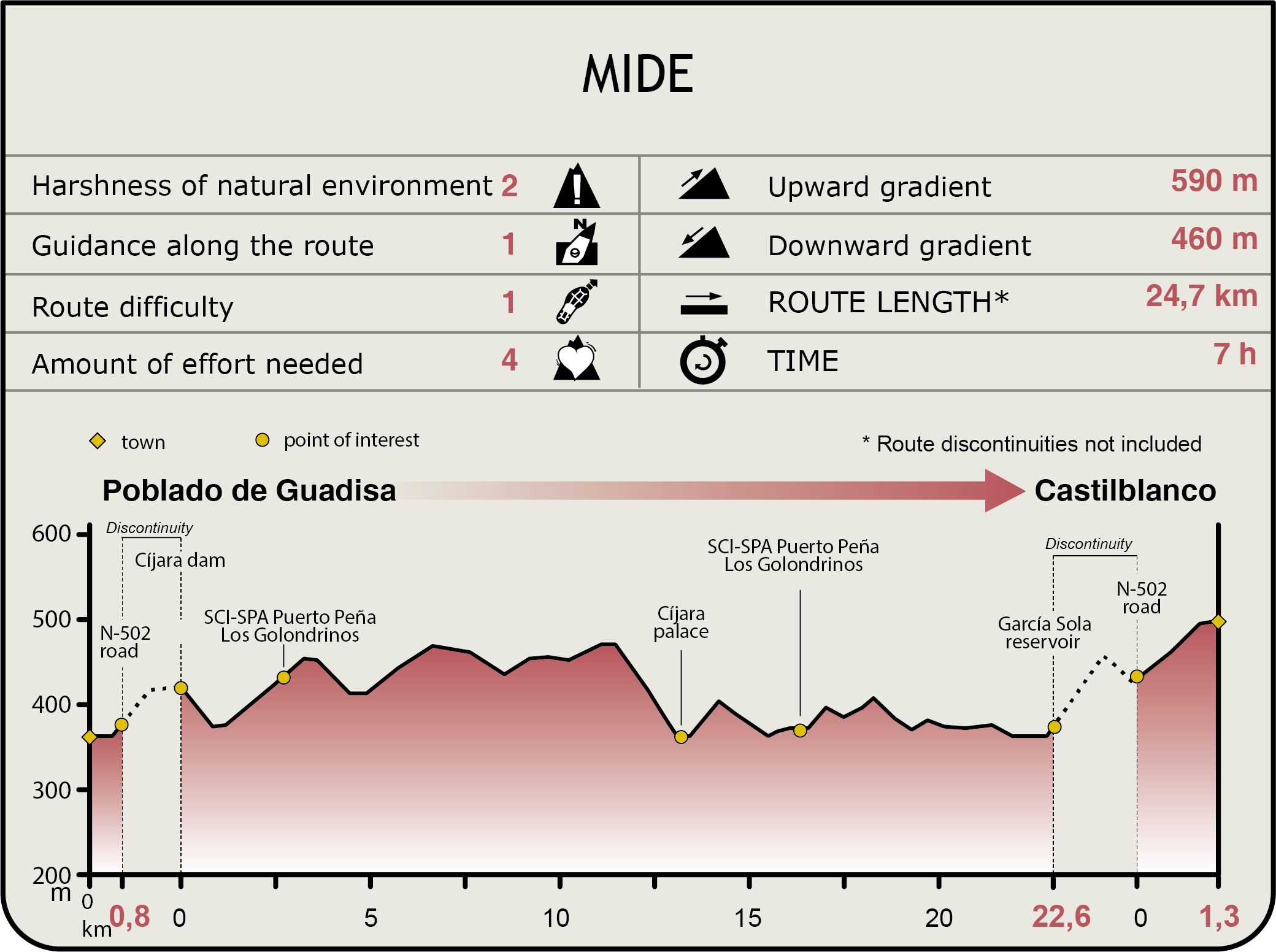
MIDE (Method for the Information of Excursions)
Featured
Further information
Cíjara Regional Game Reserve
Cíjara Regional Game Reserve is located in the northeast corner of the county. With some 130 km of perimeter, this game reserve, one of the most beautiful and best preserved in the Iberian Peninsula, extends over 25,000 ha. Indeed, it focuses on environmental conservation and safeguarding the biodiversity of game species.
This is an ideal setting for any kind of nature activity, including watching protected bird species, contemplating stunning views from viewpoints, hiking trails or simply enjoying a barbecue in the picnic areas that seamlessly blends in with the environment.
Year after year, more people come to the Reserve and neighbouring towns to enjoy hunting and fishing, giving a welcome boost to the hospitality industry in the area.
